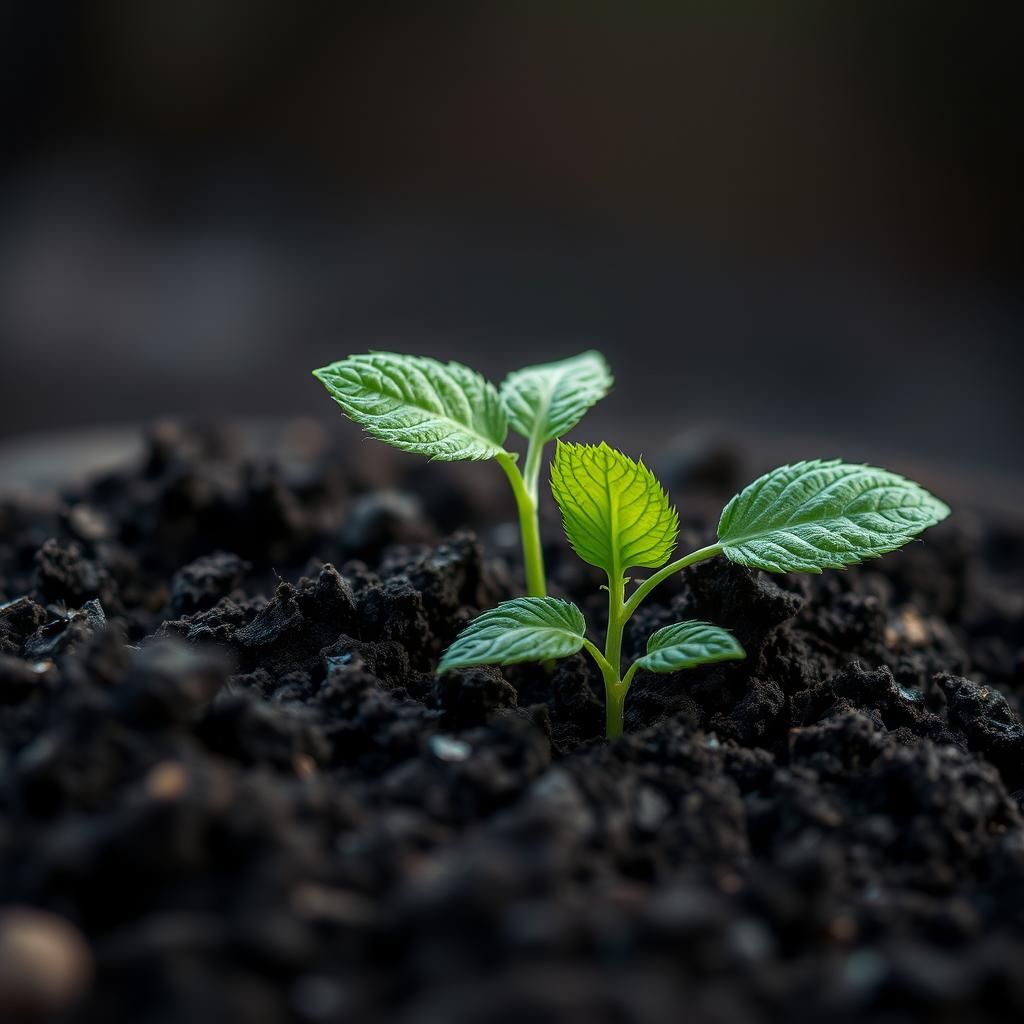How Do You Know If Soil Is Bad? Signs, Symptoms, and Solutions Explained

Healthy soil is the foundation of thriving plants and a robust ecosystem. However, identifying poor soil quality can be challenging for gardeners and farmers alike. Several signs and symptoms indicate soil health issues, ranging from discolored plants to poor drainage. Understanding these indicators is crucial for diagnosing soil problems early and implementing effective solutions. This article will explore the common signs of bad soil, the potential symptoms plants exhibit when struggling with poor soil conditions, and practical strategies to remediate and enhance soil quality. By recognizing these factors, you can ensure a healthier environment for your plants to flourish.
How to Identify Bad Soil
Determining whether soil is bad involves assessing various factors that affect its health and suitability for plant growth. Key indicators include poor drainage, which can create waterlogging or drought conditions; a lack of nutrients such as nitrogen, phosphorus, and potassium; an extreme pH level, either too acidic or too alkaline; an abundance of salinity, which can inhibit plant root development; and noticeable signs of pest infestations or diseases. Conducting soil tests and observing plant performance can provide insights into potential problems with the soil quality.
Indicators of Poor Drainage
Poor drainage is a critical sign of bad soil; it often results in waterlogging, where excess water accumulates, leading to root rot and reduced plant growth. Conversely, soil that drains too quickly may not retain enough moisture for plants, creating drought stress. Observing standing water after heavy rains or consistently dry patches can indicate drainage issues that impair soil health and plant vitality.
Lack of Nutrients
Soil can be deemed bad if it lacks essential nutrients, such as nitrogen, phosphorus, and potassium, which are vital for healthy plant growth. A deficiency in these nutrients can lead to stunted growth, yellowing leaves, and poor flowering or fruiting. Regular soil testing can help determine nutrient levels and guide amendments to restore balance and support plant health.
Soil pH Levels
The pH level of soil is an indicator of its health; soils that are too acidic (below pH 6) or too alkaline (above pH 8) can negatively impact nutrient availability. For example, high acidity can hinder the uptake of essential nutrients like calcium and magnesium, while alkalinity can lead to nutrient lockout. Testing soil pH is essential for understanding its suitability for various plants, as many thrive in a neutral pH range of 6 to 7.5.
See also:
Excess Salinity
High levels of salinity in soil can be detrimental, leading to reduced plant growth and even death. This condition often arises from poor drainage or excessive use of chemical fertilizers. Plants in saline soils may exhibit hibernating growth patterns, wilting leaves, and burning leaf tips. Identifying and managing salinity is crucial for improving soil health and ensuring sustainable growth solutions.
Pest Infestations and Diseases
Visible signs of pests or diseases in the soil can indicate its poor health. Infestations of harmful organisms like nematodes, root weevils, or fungi can damage plant roots, reducing their ability to absorb water and nutrients. Regularly inspecting plants for discolored leaves or stunted growth, alongside monitoring soil for insects or decay, can help identify underlying soil issues that compromise plant health.
| Indicator | Effect on Soil Health |
|---|---|
| Poor Drainage | Leads to waterlogging or drought stress |
| Lack of Nutrients | Causes stunted growth and yellowing leaves |
| Extreme pH | Impairs nutrient availability |
| Excess Salinity | Inhibits plant growth and leads to burning |
| Pest Infestations | Damages roots and hinders absorption |
Identifying Poor Soil Quality: Key Indicators and Assessments
Determining if soil is bad involves observing various signs and performing tests that reveal its health. Common indicators include poor plant growth, where struggling or stunted plants fail to thrive despite adequate water and nutrition. Unsightly weeds or a notable absence of desired vegetation can also suggest soil issues. Additionally, conducting soil tests to examine pH levels, nutrient content, and physical properties such as drainage and compaction will provide more definitive insights into soil quality. Ultimately, a combination of visual assessments and scientific testing is essential for accurately diagnosing soil problems.
Signs of Depleted Nutrients in Soil
A clear sign of depleted nutrients in soil is the presence of yellowing leaves or chlorosis, which indicates a lack of essential elements like nitrogen, phosphorus, or potassium. Plants may also appear stunted or exhibit poor flowering and fruiting if the soil cannot support their nutritional needs. Conducting a soil test can reveal nutrient concentrations and help determine the necessary amendments to restore fertility and promote healthy plant growth.
Poor Water Drainage and Soil Compaction
Soil that retains too much water often indicates poor drainage, which can lead to root rot and other issues. Compacted soil, typically characterized by a hard surface and reduced air pockets, hinders roots' ability to breathe and absorb water efficiently. Signs of waterlogging, such as standing water after heavy rain, necessitate evaluating soil structure and possibly implementing aeration techniques to improve drainage and root health.
See also:
Visual Signs of Soil Erosion
Erosion is a significant problem that can degrade soil quality over time. Visual indicators of erosion include bare patches on the surface and the loss of topsoil in sloped areas. Erosion not only removes the most fertile part of the soil but also can cause sedimentation in nearby waterways. Installing cover crops or retaining structures can help mitigate erosion and protect soil integrity.
Test Methods for Soil Assessment
Performing a soil test using a commercially available kit or lab services is crucial for an accurate assessment of soil health. These tests analyze its pH, nutrient levels, organic matter, and contaminant presence, offering actionable insights. A comprehensive test plan will provide a better understanding of which amendments are required to improve soil quality and boost plant growth.
Impact of Soil pH on Plant Health
Soil pH plays a critical role in determining nutrient availability to plants. A pH that is too high (alkaline) or too low (acidic) can lead to nutrient deficiencies and toxicity, ultimately affecting plant health. Many plants prefer a slightly acidic to neutral pH range (6.0-7.0). Monitoring and adjusting soil pH through the application of lime or sulfur can create a more suitable environment for optimal growth and productivity.
Questions from Our Readers
How can I tell if my soil is unhealthy?
You can determine if your soil is unhealthy by observing its color, texture, and smell. Healthy soil typically has a rich, dark color and a crumbly texture, while unhealthy soil may be pale, compacted, or have a foul odor. Additionally, the presence of pests or mold can also indicate poor soil quality.
What signs indicate poor drainage in soil?
Poor drainage is often indicated by standing water, a soggy appearance, or the presence of moss and algae on the surface. These conditions suggest that the soil is unable to properly drain excess moisture, which can lead to root rot and other plant health issues.
See also:
Can I test soil quality at home?
Yes, you can test soil quality at home using a basic soil test kit, which measures pH, nutrient levels, and contaminants. These kits can provide valuable information about the health of your soil and help you determine what amendments may be needed to improve its quality.
What plants are indicators of poor soil?
Plants such as dandelions, thistles, and clover can be signs of poor soil conditions. These weeds are often resilient and thrive in suboptimal soil environments, indicating that the soil may be lacking in nutrients or has other issues affecting its fertility.

If you want to read more articles like How Do You Know If Soil Is Bad? Signs, Symptoms, and Solutions Explained, we recommend you check out our Soil category.
Leave a Reply
Related Articles